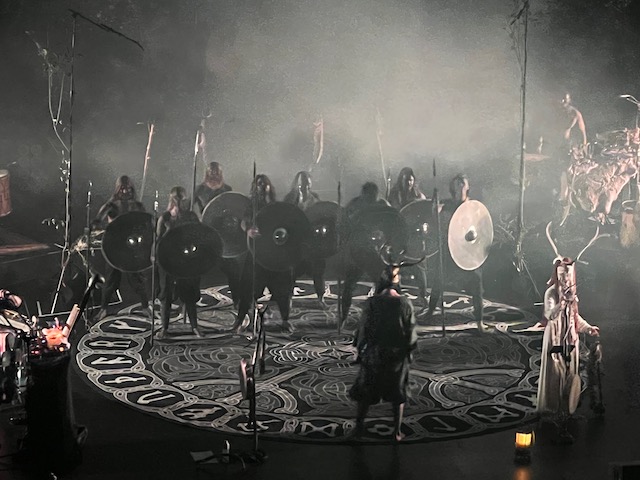
(Our editor Islander [that would be me] wrote the following concert review and took all the photos that accompany it.)
The literature of anthropological evolution (in which I’m a dabbler rather than an expert) makes a convincing case that much of our behavior is rooted in instincts that evolved over a vast span of time, instincts geared toward the survival of the species. Unfortunately, it’s also pretty clear that in the “modern age” those instincts no longer function very well as instruments of preservation and advancement. Instead, they lead to behavior that’s just plain dumb, or worse yet self-destructive, or still worse yet, dangerous to the survival of the species as a whole.
Unlike almost all other creatures on the planet, our big sophisticated brains give us the ability to override instinct for the better. Sometimes we actually behave in genuinely altruistic ways. Sometimes we’re able to extricate ourselves from dangerous predicaments through the exercise of reason when instinct alone would fail. We just don’t do any of that as often as we should, and there’s a case to be made that time is running out.
These thoughts bubbled to the surface as I reflected on the performance of Heilung I was lucky enough to witness in Seattle on the night of September 20th. On the one hand, the intense primal attraction of the show was a vivid reminder that “primitive man” still dwells within us. On the other hand, it was a testament to the willed creativity of which we’re capable, and the capacity to create beauty and magic.
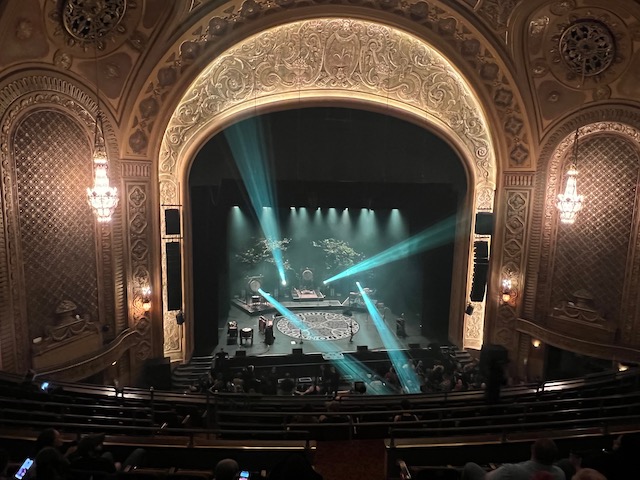
I didn’t expect to see this show. By the time I found out about it, the 2800-seat Paramount Theater was sold out. Think about that. Here’s an experimental folk music band with members from Denmark, Norway, and Germany who don’t get to the U.S. often, and they quickly sell out one of the largest and grandest concert venues in this cosmopolitan city. And not just any concert venue, but one that first opened in 1928 and is on the National Register of Historic Places. Perhaps needless to say, Heilung isn’t typical of the kinds of musical performers who show up at this place.
The crowd at the show was an added bonus to the magic of what was happening on stage. I’m talking about 2800 people who looked like the kind of crowds you typically rub shoulders with at underground metal clubs. An abundance of black t-shirts, black pants, tattoos, piercings, etc., etc.
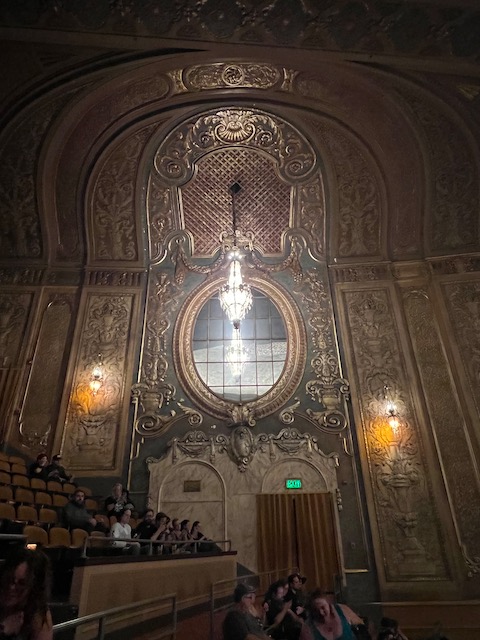
Plus, a significant percentage of the audience were adorned in solidarity with the participants in the Heilung collective — black-smudged faces, furs, horns, and unorthodox dress that attempted to time-travel significant millennia into the past. Given the grand and glamorous setting of the show, it was hilarious as well as heart-warming to be in the midst of this.
How did I come to be there? Well, I have Covid to thank for that. A group of folks who were much quicker on the trigger than I was to get a block of seats together lost a couple folks through positive covid tests, and I got invited on the eve of this show to take one of the places. It took me about two seconds of thinking before zapping back a big YES.
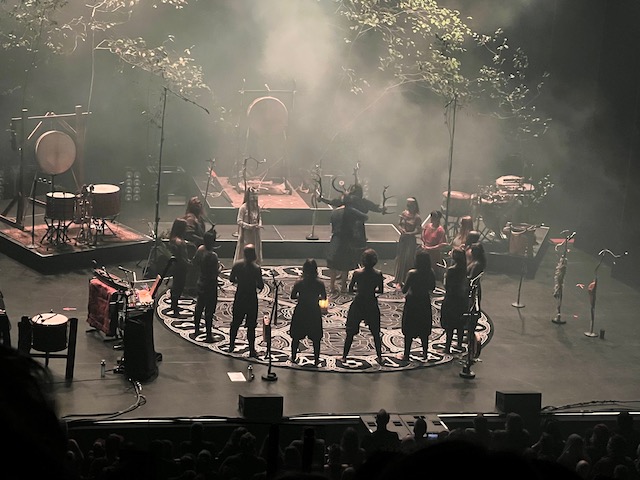
I should confess that although I’ve been fascinated by Heilung for a long time, I’m not a Heilung fanatic (of which I suspect there are hundreds of thousands around the world). I’ve spent more time watching their live performance videos than listening to their albums. I have only the thinnest knowledge of their themes, philosophies, and everything else they bring into their music and their live appearances. I have only the most superficial idea of what they sing and snarl about, in part because very little of that is in modern English.
Having said that, the allure of their music to me is inescapable. But having said that, it should be apparent that I didn’t have the most thorough idea of what I was getting myself into. It’s one thing to spend 10 minutes at a time watching a video (even watching some of them 4 or 5 times) and spending two hours watching and listening without interruption. That’s a real test. It’s an even greater challenge when you’re 6′ 1″ tall and crammed into seating made for people of average size in the 1920s.
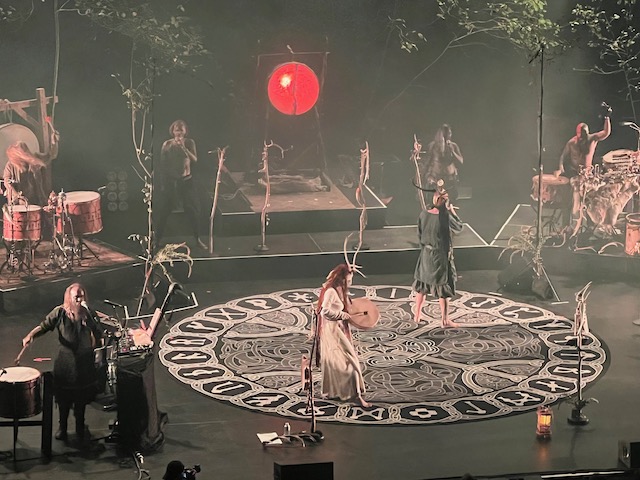
But Heilung passed the test with flying colors. In some ways it’s surprising that they did so. Their instrumentation is almost entirely percussive and acoustic. It consists of a big collection of drums (most or all of them covered in animal hides), some of those enormous and some capable of being carried by hand; rattles of different kinds; bones; the butt ends of spears; and some other small percussion instruments I couldn’t identify.
Two hours of pounding and shaking things, even with varying degrees of volume and animation, wouldn’t seem like the kind of experience that would keep you on the edge of your seat, even if (unlike me) you had enough room to get on the edge without having your knees under your jaw. But that’s not all that Heilung‘s performances consist of.
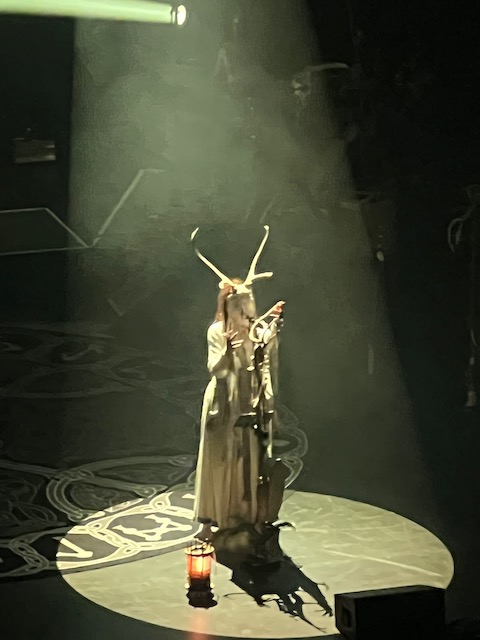
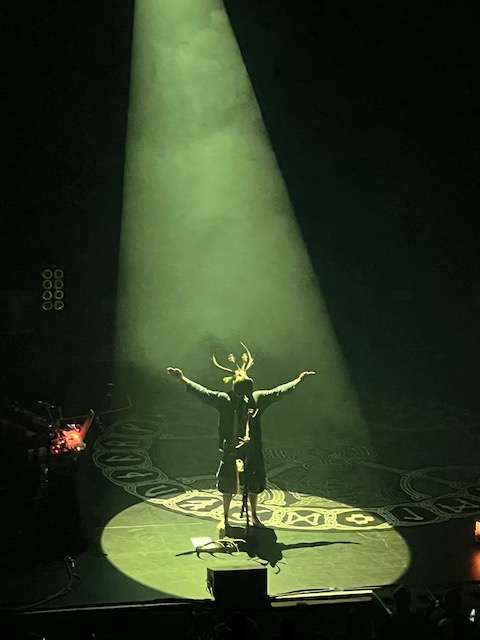
For one thing, the vocals are extraordinary. As you’ll know if you’ve seen Heilung‘s live videos, the white-clad Maria Franz has a stunning voice, and it doesn’t suffer from being on stage instead of in a studio. Her range is amazing, and when she hits the highest of falsetto notes it doesn’t sound human. It becomes a wild and eerie instrument that you might mistake for a synth.
On the other end of the scale are the throat-singing and growls of Kai Uwe Faust, and the occasional deep vocals of the band’s musical maestro Christopher Juul, adding to Faust‘s chants. And on top of that, three female vocalists added their singing and cries. Maria Franz sometimes could be seen drawing a bow across some ancient stringed instruments (maybe one of them a talharpa?), which created shrill and unearthly sensations of its own.
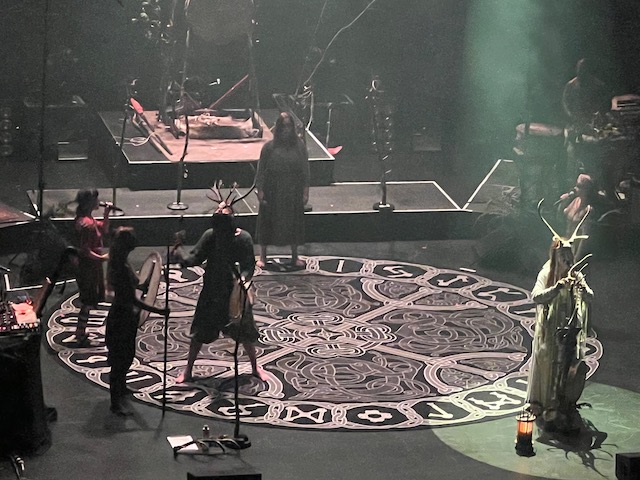
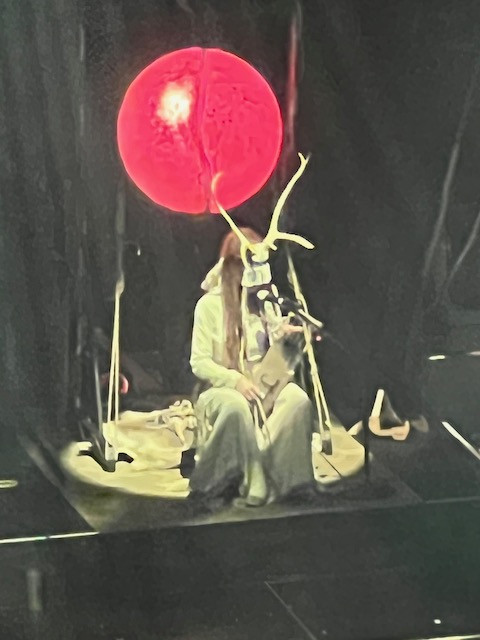
Some of the songs had very little melody, with the voices just adding another percussive effect to all the instrumental percussion. In others, the vocal melodies, especially those of Maria Franz, were paramount. Some of those experiences were harsh and warlike, others somber or ominous, and others completely spellbinding.
But there were other reasons why the two hours didn’t drag. Heilung‘s live performance is as much a form of theater as it is a musical performance. Unlike a Broadway musical or an opera, there wasn’t a single narrative story-line (or at least not one I could discern), but a patchwork of many stories, bookended by rituals that involved Faust bathing each performer in aromatic smoke, one by one.
In each song, apart from the instrumental and vocal variations, there were changes in lighting, in the volume of plumes blown from smoke machines, and in the number, positioning, appearance, and movements of the people on stage. Nearing the end, a woman performed a dance brandishing antlers lit by fire.
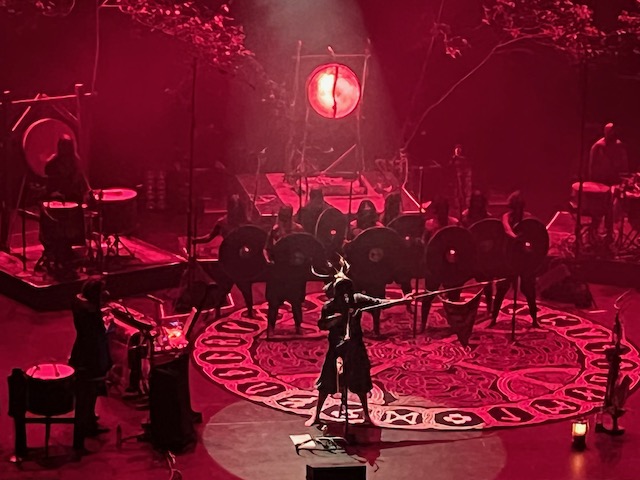
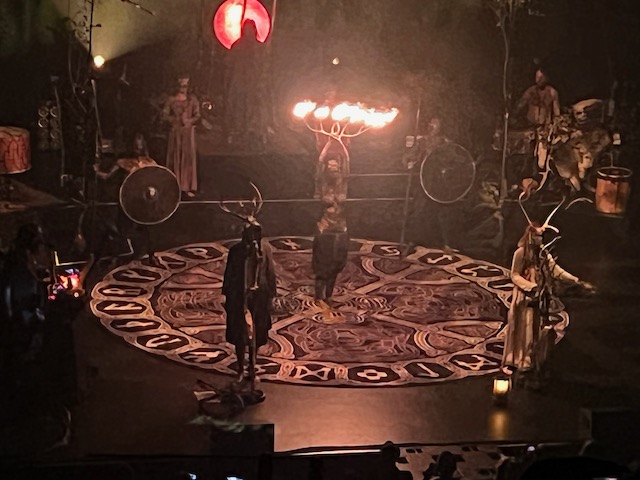
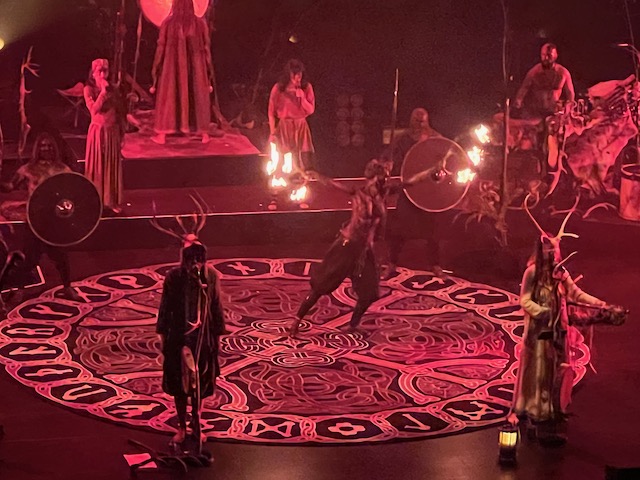
All of this provided fuel for imagination. Someone more educated than I about Heilung‘s works could tell you what each song was about. I’m glad that at least for this performance I didn’t know, and had to depend entirely on imagination. One thing I took away from the events was a throughline of observations about what some might call the traditional male and female aspects of humanity, as represented in myth.
There were plenty of images in the show (coupled with Faust‘s gravel-throated voice and the baritone chanting) that portrayed men as menacing and warlike, and others that spotlighted the gracefulness of the women, but just as often the women on stage were as fierce as the men and even more fiery, in both their movements and their voices.
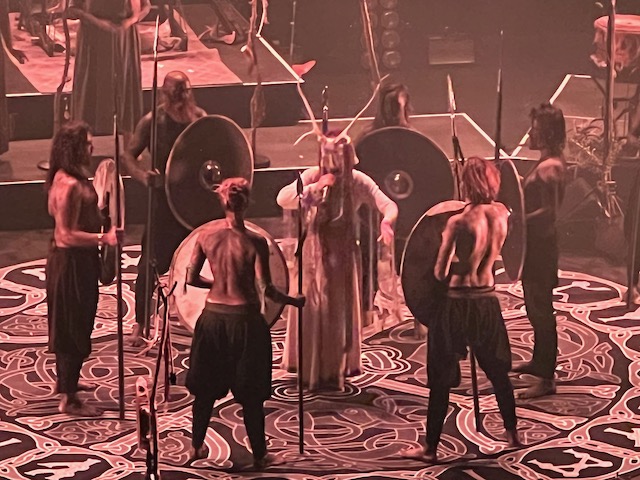
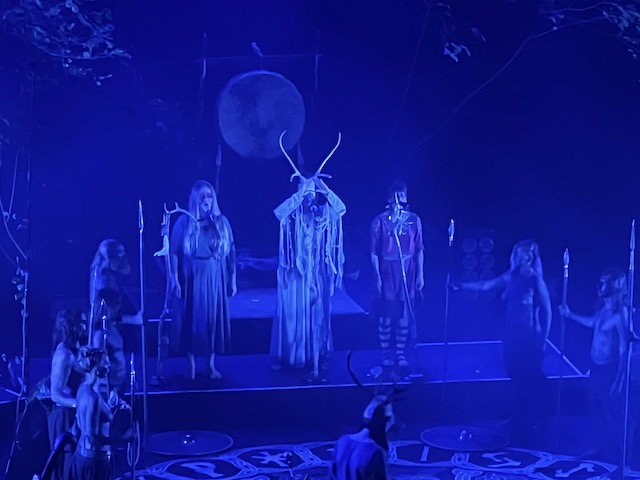
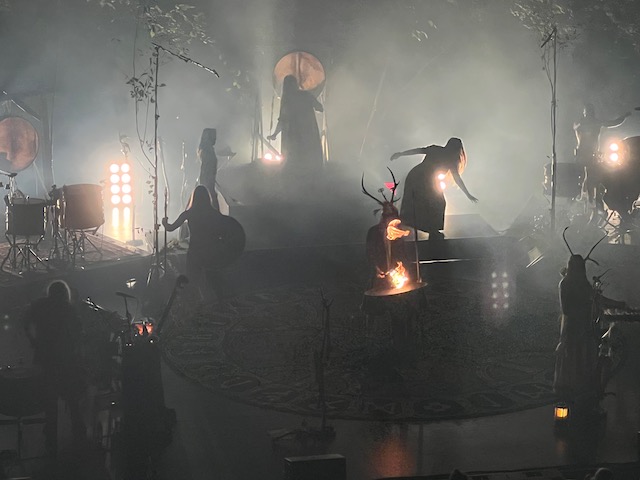
At one point Faust took the center of the stage, and there he bound a woman, her arms bent back and a spear thrust through the angles they made behind her back. He then forced her to her knees in the midst of the music. It was a jarring moment in a night that in my imagination had an overarching message of equality.
But Maria Franz appeared in the spotlight and moved Faust into the shadows. As she sang she lifted the woman up, withdrew the spear, and unbound the victim. The captive stood tall, flung her head back, and raised her arms high above. The crowd went wild too. I was too overwhelmed to take a photo. At another point Faust kneeled and bowed before Franz in the center spotlight, and she gently took his hand as she sang.
I admit that at a couple of times during the second hour I wished Heilung would finish their show. But that was mainly a function of the fact that the distance between me and the seats in front of me was so meager. It would have been rude of me to stand up and stretch, and thereby fuck up the experience of the people in the rows behind me. Frozen in the same position for two hours, I began to ache in many places.
Moreover, although our seats in the center of the mezzanine balcony gave a great view of the entire stage, the distance obscured a lot of the visual details that probably would have made the whole experience even more gripping, and I didn’t have the foresight to bring binoculars.
Yet every time the wish for an ending would cross my mind during the second hour, Heilung did something that seized my attention, or created some new spell. As I wandered with my friends out of the theater, my mind was completely transfixed by what had happened. Days later I still think about the show with wonder.
If you get the chance to see Heilung, seize it.
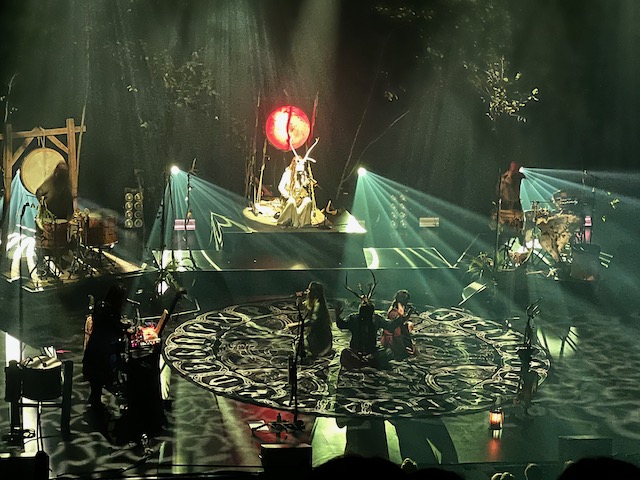
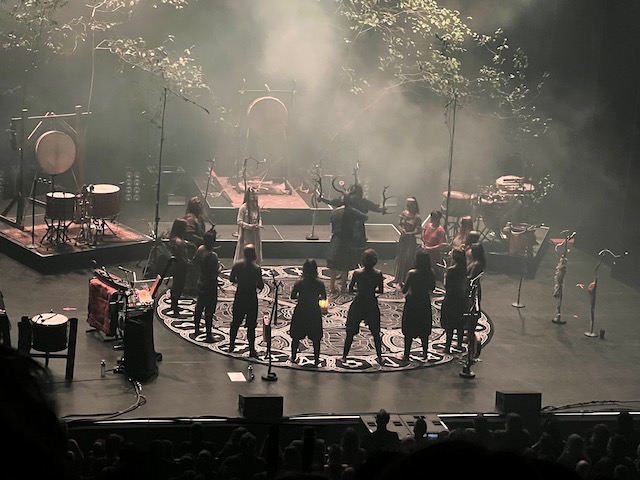

Great review!!
Thank you!
Excellent review.
I was fortunate enough to catch them in Toronto earlier this month. Outstanding performance.
Thank you, and it’s great that you got to see them too. If and when they ever come back to Seattle I’ll pounce on tickets a lot faster than this time.
Question. I am a dad, and I want to take my daughter to see the show because she loves them so much. She’s 14 years old, and I’m wondering if it seems appropriate to have her done in the orchestra section, or what the crowd behaves like if you have any input?
Down* in the orchestra
Question. I am a dad, and I want to take my daughter to see the show because she loves them so much. She’s 14 years old, and I’m wondering if it seems appropriate to have her down in the orchestra section, or what the crowd behaves like if you have any input?
At this show a lot of people in the crowd were dressed like the people in Heilung, or in more typical metalhead attire, but otherwise behaved like people at a conventional musical or play – very respectful and “well behaved.” And adoring. I don’t think it would be inappropriate for your daughter to be anywhere in the venue. But the stage set is so sprawling and fantastic that getting too close might obscure a lot of the view.
Man, I’m overjoyed you got to catch this show. It’s truly an experience that has to be seen to be fully appreciated, and your review was a thoroughly excellent capture of how it feels to be there watching them perform.
Thanks man. I’m still re-living it in my head and realizing even more how damned lucky I was to get to see that show.
The whole show is a healing in fact that is what the name means in our language.
I should have known that. And I agree with you that the whole show is a healing. I still think about it with wonder nine month later.
I don’t know if anyone has ever told you this(I suspect they have) but you are a very good writer. I’m impressed with your grammar and structure.
Thank you very much!